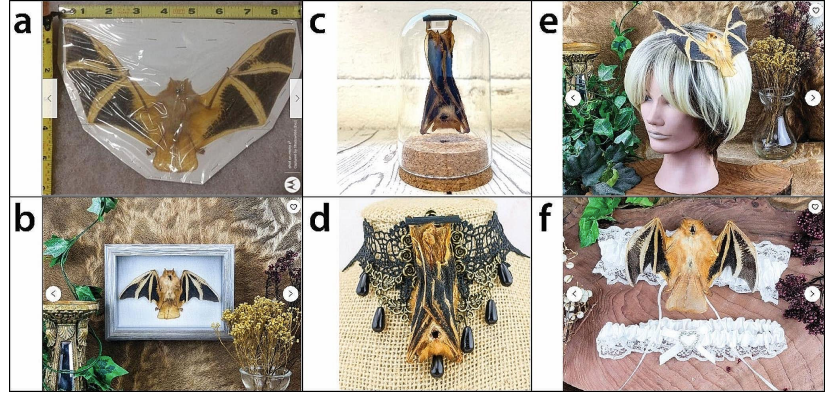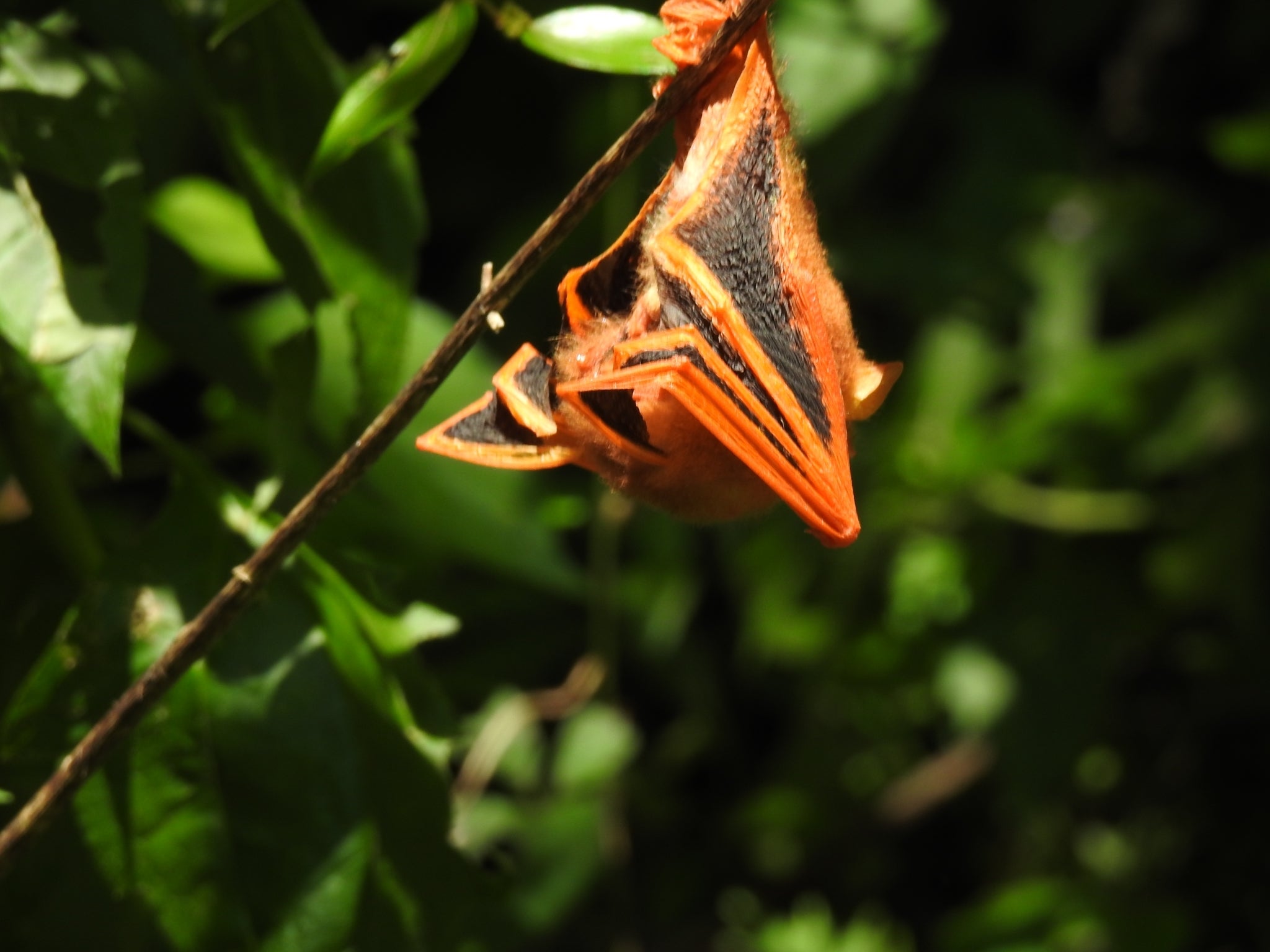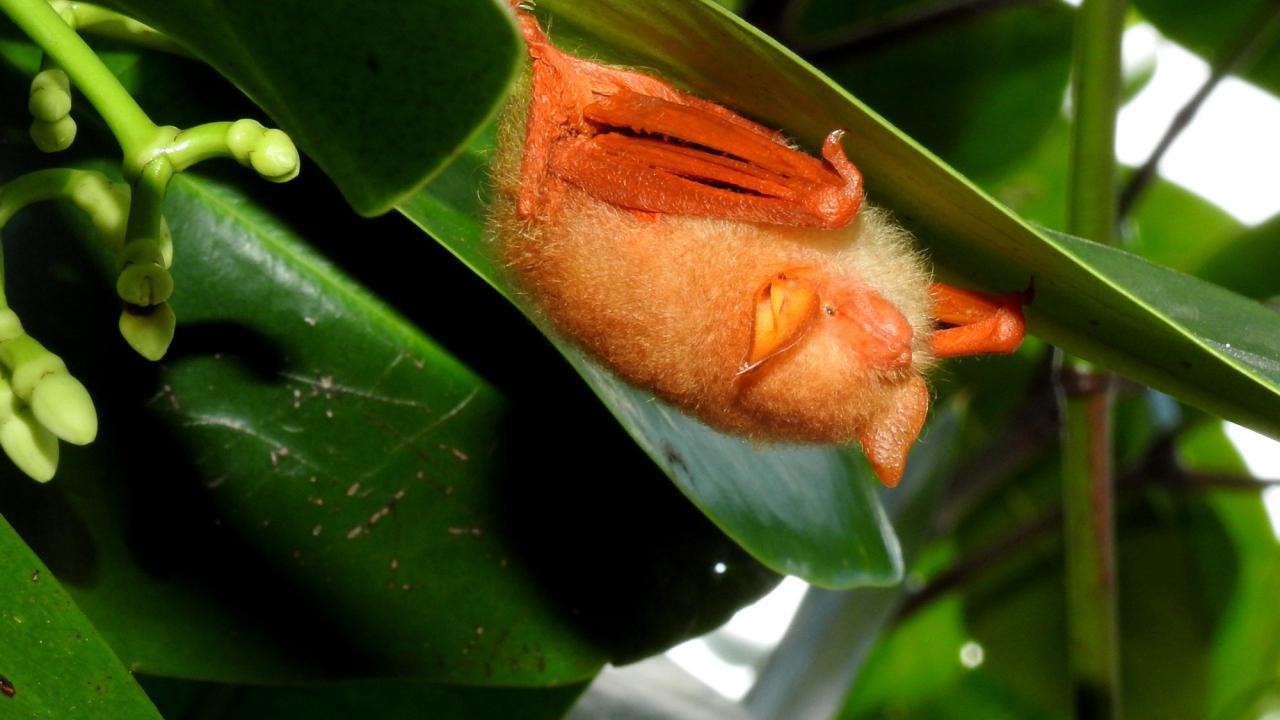A fiery orange bat, its wings folded and tiny teeth forever bared on its fuzzy face, is mounted inside a 6-inch, black coffin. Its retail price: $59. Or, for $140, you can get one framed with its black and orange wings spread, deliverable in two days.
Despite declining numbers in the wild, hundreds of specimens like this of Kerivoula picta—or painted woolly bat—are being sold on Etsy, eBay and Amazon as jewelry, Halloween decorations, and jarred curios.
A study published July 9 in the European Journal of Wildlife Research found “abundant evidence that this bat is victimized by this trade,” wrote its authors from the University of California, Davis, and City University of New York-Queens College.
They led the first comprehensive study of the ornamental trade in a bat species with members of the International Union of the Conservation of Nature’s (IUCN) Bat Trade Working Group.
“These bats are not from the United States, but they’re being sourced from across Asia and then brought here and used as décor,” said co-leading author Nistara Randhawa, a UC Davis data scientist and epidemiologist. “With this study, we hope to raise awareness and propel the conservation of this species.”

K. picta is a finger-length bat prized for its striking orange and black coloring and long, woolly fur. The bats live in parts of South, East and Southeast Asia, roosting in leaves and hunting insects in forests and fields. Categorized on the IUCN Red List as a near-threatened species, the painted woolly bat’s conservation status is expected to worsen with the rise and ease of global e-commerce.
Orange and black and sold all over
For the study, the scientists used data mining and manual data collection to analyze and quantify the online bat trade across U.S.-based eBay, Etsy and Amazon websites during the 2022 Halloween and Christmas season.
Of the 856 bat listings identified, 215 were for K. picta, representing 284 individual painted woolly bats. U.S. sellers on eBay and Etsy shipped bats from 30 states and K. picta, specifically, from 19 states. Tennessee sold more bats than any other state, accounting for 45% of K. picta listings. It was followed by Illinois, California and Florida, which together made up 27.5% of K. picta vendors.
“We’re talking about 284 distinct individuals found over just a three-month period,” said co-leading author Joanna Coleman, an assistant professor at CUNY-Queens College and co-chair of the IUCN’s Bat Trade Working Group. “That doesn’t include all the others sold on websites and physical shops year-round across the world. Because these bats are quite scarce on landscapes, we are concerned that hunters might be systematically going out and removing every individual they see.”

About 20% of listings used sales language evocative of social or environmental concerns, such as “ethical” or “sustainable.” Several claimed the bats were bred in captivity, died of natural causes or were not harmed — claims the authors roundly reject. Another listing falsely claimed the bats had been certified as sustainably sourced. The study suggests such wording is an attempt to ease buyers’ environmental and social concerns, potentially misleading them into a sale.
Ways to protect painted woolly bats
Painted woolly bats live about 10 years and produce just one offspring at a time. That life history makes them especially vulnerable to trade. Coleman recalled the collapse of the North Atlantic cod fishery in the 1990s, when, after decades of fishing cod more quickly than they could reproduce, stocks declined to less than 1% of historical populations. Fisheries managers are still working to restore the population.
“No one was taking into account the slow life history that cod have,” Coleman said. “Kerivoula picta reproduce even more slowly than cod. It’s frightening to me that this trade could be depleting K. picta populations in a similar fashion.”
The authors recommend formal legal protection for K. picta by including it in the Convention on International Trade in Endangered Species of Wild Fauna and Flora (CITES) Appendix I. This would prohibit its international trade.
The authors also support a legal petition to list painted woolly bats under the Endangered Species Act. They further call for more field studies to understand population trends and challenges for painted woolly bats.
“Bat populations are declining worldwide, and K. picta is but one of the many unique bat species affected by ongoing global biodiversity loss,” Randhawa said. “They are incredibly important to protect, not least because of the vital ecosystem services bats provide. K. picta should be roosting under the banana leaves of its natural habitat, not hanging dead on a wall as décor.”
Additional coauthoring institutions included City University of New York, Monitor Conservation Research Society, National Taiwan Normal University, Texas Tech University, Singapore National Parks Board, University of Illinois Urbana-Champaign, Vietnam Academy of Science and Technology, and American Museum of Natural History.
The study was funded by the Animal Welfare Institute to Monitor Conservation Research Society.
Media Resources
- Nistara Randhawa, UC Davis, nrandhawa@ucdavis.edu
- Joanna L. Coleman, CUNY-Queens College, joanna.coleman@qc.cuny.edu
- Kat Kerlin, UC Davis News and Media Relations, 530-750-9195, kekerlin@ucdavis.edu
